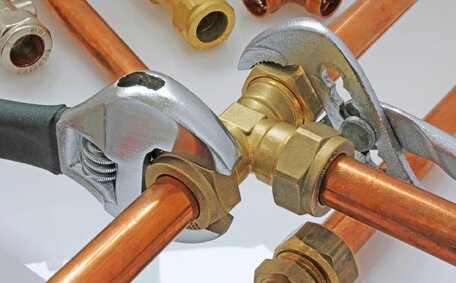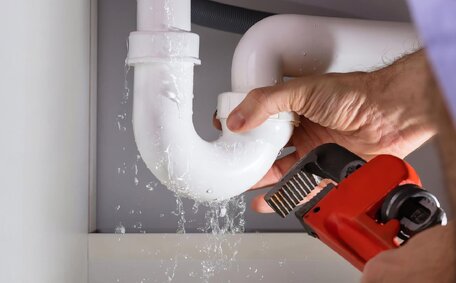Overview of Gas Systems in Kitchen Renovations
In kitchen renovations, updating gas systems is essential, often involving modifications to gas lines or new installations for appliances such as cooktops, ovens, and hot water systems. Kitchen layout changes can also necessitate gas fitting modifications.
Natural gas integration in kitchen renovations offers multiple advantages. Gas offers efficient and controllable heating for cooking and hot water. It also allows for quicker boil times and precise temperature regulation compared to electric alternatives.
When renovating their kitchens, homeowners must consider how any layout or appliance changes will impact your gas systems. Qualified gas fitters are essential to ensure all gas modifications comply with legal and safety protocols. The professionals can install new lines, reroute existing ones, connect appliances, and conduct leak testing.
Gas fitting services are vital in establishing a new kitchen. Seamlessly integrating gas with the new kitchen design maximises efficiency while minimising safety risks.
Key Gas Appliances Used in Kitchens
The most ubiquitous gas appliances found in modern kitchens are cooktops and ovens. Professional chefs typically favour gas appliances for superior temperature control and performance versus electric models.
Cooktops allow for precise and rapid adjustments from a rolling boil to the lowest simmer. Gas burners also provide consistent heating across the entire pan surface. These traits enable nuanced cooking techniques for excellent results.
Gas ovens heat up faster and distribute warmth more evenly than their electric counterparts. This allows for proper crisping and browning without burnt edges or undercooked centres.
Gas-powered continuous flow or storage hot water systems are also popular in kitchens. They provide a steady supply of hot water without relying on electric heating elements, delivering potential cost savings over time.
Cooktops
Gas cooktops are often preferred by both home cooks and professional chefs. Gas cooktops provide immediate and accurate control over flame intensity, enabling precise temperature adjustments for perfect cooking results. Gas allows transitioning a pan from a fierce boil to the lowest simmer instantly.
Such responsiveness is especially beneficial for cooking methods such as pan frying or sautéing. Cooks can match the heat perfectly to the cooking progress. Delicate foods won’t burn from getting too hot or stew from weak heat.
Gas burners also heat pans more evenly than coils or glass tops. The flames extend up the sides of cookware, creating uniform warmth across the entire surface. This allows food to cook more consistently without hot spots or cool edges.
These advantages make gas a popular choice in professional kitchens. Amateur cooks also benefit from the exceptional temperature control and versatility offered by gas.
Ovens
Gas ovens provide even, consistent heating that perfectly crisps and browns without creating hot spots or burnt edges. Their rapid heat-up times enable faster preheating so that dishes spend less time drying out.
Enthusiastic home cooks favour gas ovens for their superior thermal performance. Furthermore, gas ovens provide precise temperature control, essential for complex baking. Gas ovens perform closer to those found in commercial plumbing setups than electric ovens.
Kitchen renovations present the ideal opportunity to upgrade ovens. Switching from electric to gas introduces a wider range of cooking options due to improved control. Newer gas oven models also offer improved efficiency through features like convection fans or better insulation.
When planning for new gas ovens, you’ll need to ensure you have adequate existing gas lines or install new ones during kitchen renovations. Using qualified gas fitters ensures full compliance with all legal and safety standards. With good gas lines, new efficient models, and professional installation, homeowners can unlock the full potential of gas oven performance.
When to Involve a Licensed Gas Fitter
It is compulsory for homeowners to engage licensed gas fitters at various crucial phases of the kitchen renovation process.
Only certified gas fitters are legally permitted to connect new gas stoves, cooktops, or ovens to gas fittings. They ensure correct pressure and airflow for a stable gas connection and optimal performance.
Certification for gas fitters is obligatory if the renovation entails relocating existing gas pipes or installing new ones. Gas fitters adhere to protocols to prevent potentially dangerous leaks.
Installing a new sink also calls for the disconnection and reconnection of gas lines by authorized professionals. They conduct thorough leak checks before restoring regular gas flow.
Seeking out qualified, licenced gas fitting services for the key phases of kitchen upgrades ensures full compliance. Gas fitters have the expertise, credentials, and equipment to facilitate installations while optimising safety.
Regulations and Codes for Gas Work
Gas fitting services during renovations must adhere to the applicable building codes and plumbing regulations. This includes adherence to AS/NZS 5601.1:2013 for gas installations.
As stipulated by NSW legislation, only licensed plumbers or gas fitters can undertake gas-related work. This ensures qualifications and expertise in safely routing gas lines, connecting appliances, leak testing, and certification.
Legally, installing or modifying gas appliances and components demands compliance documentation. This includes forms such as a Certificate of Compliance and forms lodged with Fair Trading.
Adhering to regulations also upholds insurance coverage and manufacturer warranties. Faulty DIY installations often void protection, leaving homeowners liable.
By involving qualified plumbing gas fitting professionals accredited to legally perform the work, St Ives homeowners uphold compliance, optimise safety, maintain insurance and warranties, and gain peace of mind.
Inspection and Testing Procedures
Once gas fitting installations or alterations conclude while renovating your space, accredited professionals follow stringent inspection and testing protocols.
They first thoroughly examine all new gas lines, connections, appliance hookups, and components. Technicians check for correct clearances, adequate ventilation, proper appliance operation, and any visible issues.
Gas fitters then conduct leak testing by pressurising systems with air or trace gases. They employ detection devices to identify any escaping gas from connections or pipes. If leaks occur, the area is immediately isolated and rectified.
Experts check the gas supply pressure and the combustion efficiency of the appliance. All burners and pilots are lit to ensure adequate gas flow and efficient flaming.
Adhering to structured verification processes validates that newly installed or altered gas systems function safely and effectively after renovations. Homeowners can rest assured due to the thorough testing and inspections carried out by gas fitters.
Coordinating Gas Work During Remodels
Thorough planning and strategic coordination minimise the disruptions caused by gas work during kitchen renovations. Homeowners should consult gas fitting experts early when designing the new layout. Professionals like St Ives Plumbing can advise on optimally routing new lines.
Once the floorplan is set, homeowners should align schedules with other trades. Schedule gas fitting after demolition but before rebuilding begins. This allows easy access for installations while avoiding covering up new pipes or appliances.
It’s crucial during construction to ensure trades leave enough clearance around gas installations. Keep an eye out for punctured lines or damage from other works. Notify issues immediately to rectify risks.
To minimise cooking downtime, homeowners can set up temporary mobile cooktops while gas ovens get connected. St Ives Plumbing can recommend rental equipment if needed.
Effective planning and diligent oversight ensure that incorporating gas work does not hinder the progress of kitchen renovations. St Ives Plumbing helps smoothly coordinate gas fitting for safe, compliant and high-performing systems.
Benefits of Gas Appliances
Incorporating gas appliances into kitchen renovations provides homeowners numerous advantages.
Gas cooktops and ovens offer superior temperature control, even heat distribution, rapid preheating, and precision flaming. This flexibility empowers home chefs to produce restaurant-calibre dishes.
The instant heat of gas also means shorter wait times for boiling water with an efficient water system. Going gas over electric delivers substantial cost savings from higher energy efficiency.
Gas appliances also enable the luxury of continuous flow hot water. Homeowners enjoy a continuous hot water supply on-demand, eliminating the need for electric elements or storage tanks.
Opting for gas appliances instead of electric during renovations can circumvent costly electrical infrastructure upgrades.
Gas systems, when professionally installed and serviced, provide years of reliable, high-performance operation. Experienced gas fitting professionals enable you to fully harness the capabilities of gas appliances in your kitchen renovation.
Safety Considerations with Gas
Working with gas systems introduces critical safety considerations during kitchen renovations. Gas leaks or explosions pose severe risks of fire, property damage, injury, and even death.
All gas appliances feature shut-off valves allowing isolation during remodelling. This prevents accidental ignition of leaking gas. Licenced technicians verify appliances stay switched off when conducting work nearby, preventing any potential gas leak.
Only qualified gas fitters can legally install, alter, repair or remove gas lines and appliances. Their training and certification equip them to safely handle gas systems.
Technicians follow meticulous leak check protocols after every gas alteration using specially calibrated equipment. They ensure zero gas escape guaranteeing household safety.
With gas under pressure, punctured lines can rapidly fill spaces with extreme flammability. Certified professionals prevent hazardous leaks via precision handling and thorough testing.
By entrusting gas work only to licenced experts, homeowners ensure full compliance with regulations. This also upholds insurance protections should the worst occur.
Qualified Professionals Ensure Compliance
Employing qualified gas fitters for kitchen renovations guarantees full compliance with plumbing codes and standards. Technicians accredited by agencies like Fair Trading possess extensive training, licencing, and equipment necessary to legally and safely perform gas work.
Professionals like those from St Ives Plumbing follow stringent methodologies encompassing precise installations, leak detection, verification testing, and certification paperwork. This upholds compliance while optimising function and household protection.
Violating regulations via DIY gas fitting often voids home insurance policies. Faulty installations can also lead to substantial fines or legal issues in the event of an incident. Qualified experts prevent such risks.
With in-depth understanding of codes and procedures paired with practical field expertise, accredited gas fitters from St Ives Plumbing supply compliance assurance. They facilitate secure, high-performing gas systems to unlock the full potential of new appliances.
Individual Shutoffs for Emergencies
Gas safety legislation mandates that all fixed gas appliances in Australian households have individual shutoff valves. This allows occupants to isolate any appliance with emergent issues while retaining gas supply to the rest of the home.
During kitchen renovations, contractors can shut off appliances that need removal or alteration without cutting whole-home gas supply. This prevents accidental ignition and allows continued usage of unaffected appliances to minimise disruptions.
The valves also prove critical if leaks arise in specific units within your home. Rather than requiring full system shutdowns, only the problem appliance gets isolated until repairs occur. This localised control retains gas access for other household needs.
In emergency situations like fires or earthquakes, gas valves provide vital control. Emergency services can rapidly shut down individual appliances that pose safety risks from damage. This reduces the chance of gas leaks or explosions.
With the ability to segregate any compromised gas appliances, individual shutoff valves uphold safety for occupants and contractors. They contain dangers while avoiding unnecessary home-wide cutoffs. This mandated emergency backup empowers both rapid responses and uninterrupted usage.






